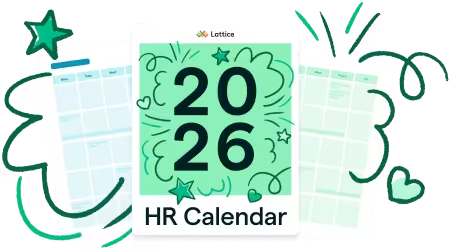How Lattice is moving performance reviews a step forward


During the performance review process, employees are asked to evaluate their colleagues’ work over the past year or (hopefully) quarter. Reviewers are tasked with providing articulate feedback that not only help their co-workers grow as professionals, but also have a serious impact on a person’s salary and standing within an organization.
This process puts the burden on the reviewer to evaluate their co-worker’s accomplishments and impact by recalling what’s happened over the last three to twelve months. But most people don’t remember what they were working on four months ago, let alone what their co-workers were doing. And to make this process even more difficult, peer reviewers are often asked to review 4-5 co-workers.
To be a successful peer reviewer, takes an acute perception of co-worker expectations and a really good memory.
At Lattice, we believe this dynamic is unfair for both the reviewer and reviewee, so we adapted our review tool to help surface more information about the employee during the review.
Removing Recency Bias
When evaluating peers, it’s natural for reviewers to default to what’s happened most recently at work, and forget about a co-worker’s actions a few months earlier.
To help prevent this from happening, we’re surfacing public/private feedback and notes to self, within the performance review. When filling out an evaluation, reviewers are able to see a list of the feedback the employee has received throughout the year to remember where the employee was successful and where they need improvement.
We see this feature as a major step forward in removing recency bias from the performance review process.
Providing Context
Often times, peer reviewers don’t have complete insight into what a co-worker is working on day-to-day, or more importantly, what an employee is expected to accomplish over a certain period of time. You may enjoy working with someone, but are they really making an impact on the organization? Or conversely, a person might have been difficult to work with, but was just focused on higher priority tasks.
To help provide insight to what’s expected of an employee, we’re now bringing in a person’s goals to into the performance review.
Our hope is that by surfacing employee’s goals during the review process, we start to provide some important context of what’s expected of an employee, and make the process better for everyone.
By surfacing continuous feedback and goals within the performance review, we’re helping create a more holistic and accurate picture of an employee’s performance. And a positive step forward for the performance review process.

Your people are your business
Ensure both are successful with Lattice.


.webp)
